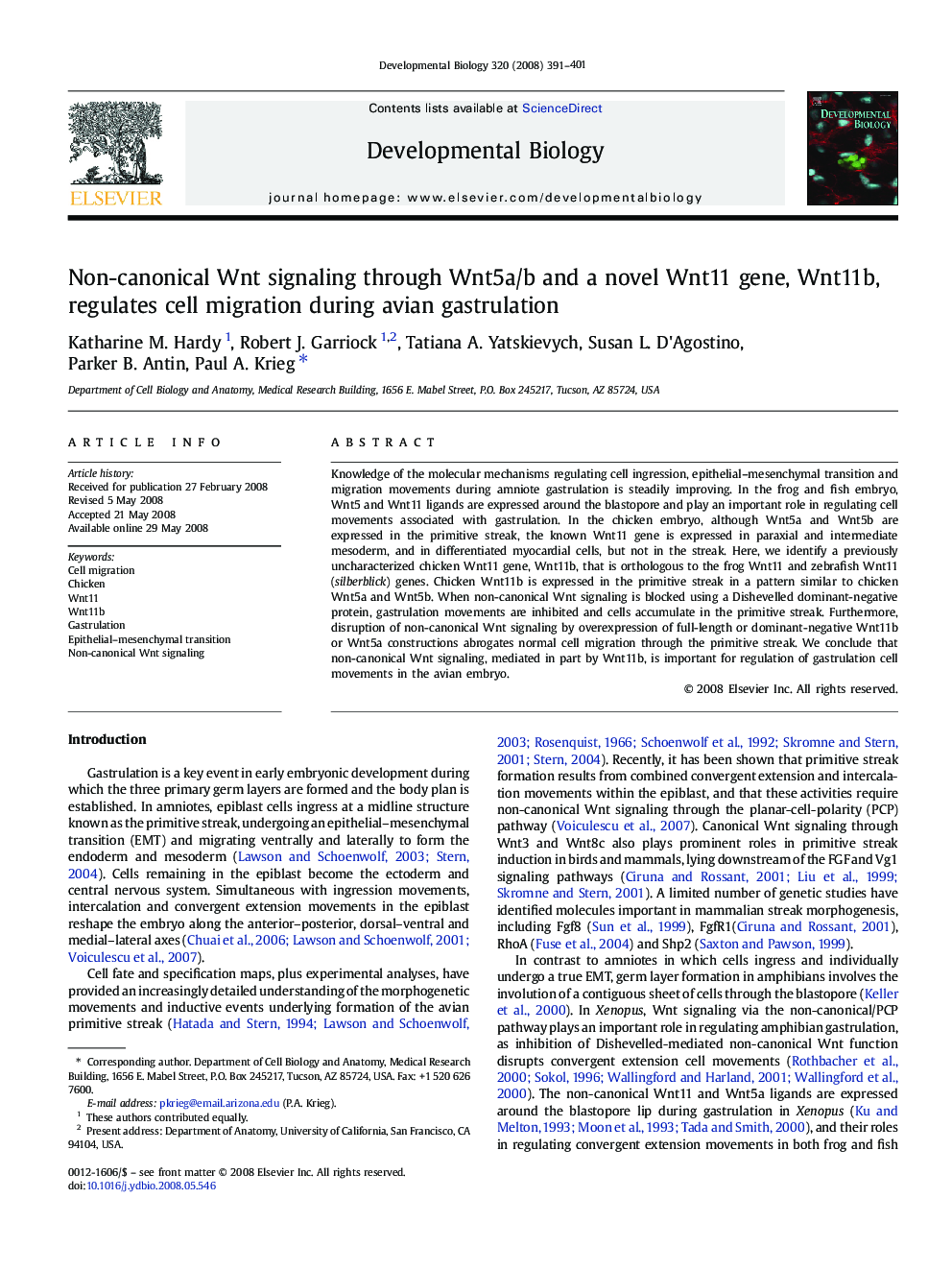| Article ID | Journal | Published Year | Pages | File Type |
|---|---|---|---|---|
| 2174499 | Developmental Biology | 2008 | 11 Pages |
Knowledge of the molecular mechanisms regulating cell ingression, epithelial–mesenchymal transition and migration movements during amniote gastrulation is steadily improving. In the frog and fish embryo, Wnt5 and Wnt11 ligands are expressed around the blastopore and play an important role in regulating cell movements associated with gastrulation. In the chicken embryo, although Wnt5a and Wnt5b are expressed in the primitive streak, the known Wnt11 gene is expressed in paraxial and intermediate mesoderm, and in differentiated myocardial cells, but not in the streak. Here, we identify a previously uncharacterized chicken Wnt11 gene, Wnt11b, that is orthologous to the frog Wnt11 and zebrafish Wnt11 (silberblick) genes. Chicken Wnt11b is expressed in the primitive streak in a pattern similar to chicken Wnt5a and Wnt5b. When non-canonical Wnt signaling is blocked using a Dishevelled dominant-negative protein, gastrulation movements are inhibited and cells accumulate in the primitive streak. Furthermore, disruption of non-canonical Wnt signaling by overexpression of full-length or dominant-negative Wnt11b or Wnt5a constructions abrogates normal cell migration through the primitive streak. We conclude that non-canonical Wnt signaling, mediated in part by Wnt11b, is important for regulation of gastrulation cell movements in the avian embryo.
